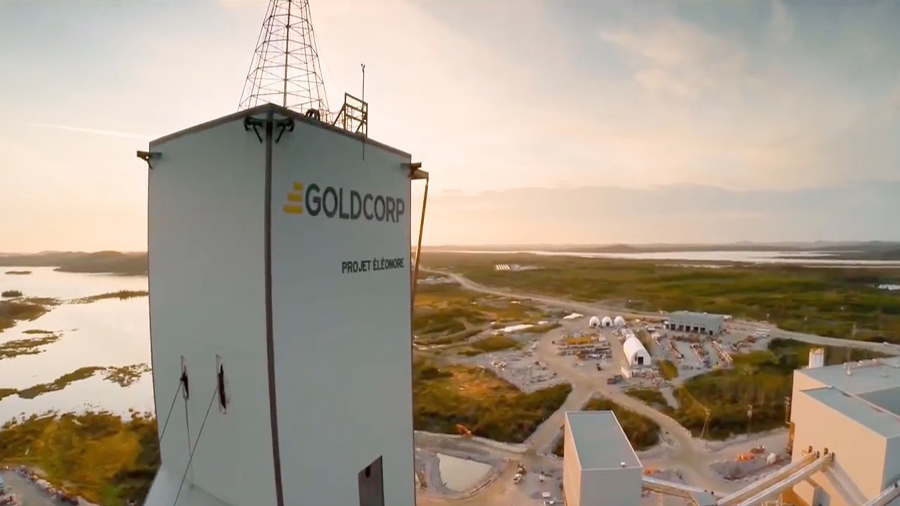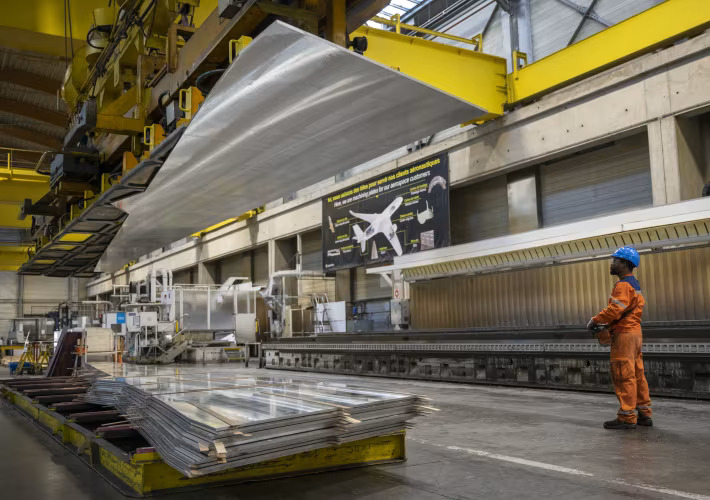Hey Watson! Is there gold in them thar hills?

All the easy digging has been done. All the richest seams have been mined. All the big discoveries have been made.
It’s become something of a cliché in mining to pine for the good ole days of rivers of gold, oceans of diamonds and mountains of copper (as if that ever existed).
But that ignores the enormous technological strides that the mining and exploration industry has made – mostly in the interest of efficiency and cost-cutting, but also for discovery.
Advanced technology is being deployed across the industry. From remote management of mines from 1000s of kms away using autonomous trucks and trains, equipment monitoring every tiny detail of plants and processes in real time, widespread automation and mechanization to sampling, detection, imaging and surveying systems. And drones; did I mention drones.
All of this produces data. Tonnes and tonnes of it.
Goldcorp’s first task for Watson is extending Red Lake’s life
Last month Vancouver-based Goldcorp took a technological leap becoming the first company in the sector to go public about its intentions to harness artificial intelligence to mine all this data.
AI is a buzzword that is bandied about with too much abandon these days and tech firms’ marketing departments often use AI to describe nothing more than fancy software or clever algorithms.
Goldcorp is partnering with IBM, one of the pioneers in the field, and the New York-based tech giant prefers to call it cognitive computing. IBM created the stand-alone division in 2014 built around its Watson system.
IBM, seeing its traditional business lines come under pressure from cloud computing, is betting big on Watson. Watson has been expanded from a “thinking supercomputer” famously beating human contestants on the TV quiz show Jeopardy to a data analytics and machine learning system. Watson is being applied across a range of industries – anything from fashion to oncology to non-profit fundraising. And now finding gold ore.
Mark Fawcett, a partner with IBM Global Business Services, tells MINING.com that Watson could be deployed at Goldcorp to perform a number of functions including mine planning, optimizing operational performance and sharpening takeover strategies for the acquisitive company.

Red Lake: Image: CNW Group/IBM Canada
In the end, Goldcorp, the world’s fourth largest gold mining company by output, chose to send Watson and IBM’s data scientists to its Red Lake mine in Ontario.
Goldcorp’s first task for Watson is extending Red Lake’s life as the high-grade deposit is set to be depleted by the end of the decade. Exploration is now focused on the Cochenour and HG Young projects in the historic district with a pre-feasbility study for the former expected before the end of the year.
Fawcett stresses that Watson is not a computer program or just a data crunching machine, but a training system. Watson will tap Goldcorp’s institutional knowledge and learn how to think like a geologist, analyzing millions of core samples, assays, geological models, drillhole data sets, maps, seismic surveys and geological data.
While a company’s experts train Watson to think like an engineer, Watson would teach them “how to think like a thousand engineers”
Dariusz Piotrowski, IBM Development Leader for Natural Resources Industries emphasizes the communal nature of the system. While a company’s experts train Watson to think like an engineer, Watson would teach them “how to think like a thousand engineers” by synthesizing the different viewpoints and biases of its human trainers or making visible blind spots in analysis.
The learning process never stops says Fawcett. Watson leverages Goldcorp engineers and geologists’ collective knowledge, but can also “unlearn” bad or outdated information and reprogram itself based on new discoveries and new ways of interpreting data.
Watson is there to augment not replace geologists and like any geologist would have to explain how it came to its conclusions. While Watson can speed up discovery and narrow down the options, final decisions will always be up to the humans, say Fawcett. (Phew…)
There are caveats. While the system has the ability to clean up data and appraise the integrity of data, Watson is subject to being trained incorrectly. Or it can be trained with incomplete or inadequate data.
For all its human qualities, Watson may never catch gold fever
Piotrowski could not be drawn on the financial details of the agreement with Goldcorp, but says IBM’s philosophy is different from other companies in the field, with all data and knowledge owned by clients like Goldcorp rather than IBM.
Watson has some experience with exploration – Spanish oil giant Repsol was an early adopter of the technology and signed up with IBM back in 2014 to develop applications in what was a $15–$20m deal at the time. Repsol made headlines last month with what is considered the largest onshore oil field discovery in the US in over three decades. The Alaska North Slope find is pegged at 1.2 billion barrels of crude.
Australia’s Woodside is also a longtime Watson user and the offshore company has taken the technology to another level with the creation of an avatar called Willow which enables the company’s geologists and engineers to interact with the system using natural language.
Understanding natural language is one of Watson’s biggest selling points. My question whether you can ask Watson: “Where is the gold?” and then everybody grabs a shovel and start digging elicited smiles, but Piotrowski is quick to add that yes, ultimately that is the goal.
Although we’re a long way away from it.
And for humans employed in the quest to find and mine gold, that may not be such a bad thing.
After all, for all its human qualities, Watson may never catch gold fever.
{{ commodity.name }}
{{ post.title }}
{{ post.date }}




3 Comments
Mike Failla
Now it we can get watson to put on his diggers and mine the gold……well that would be a slam dunk right? Have a good day everyone! be safe!
Koh
Garbage in = Garbage out… which is the primary problem human mining engineers struggle with. Trying to program ai just adds a level of complexity.
Alexandre Dalmax
You are correct about the main problem and the challenge, but a cognitive approach is a powerful tool for mining engineers for cleaning up and qualifying relevant information to improve the capabilities on the mining processes and for the business. It’s like a gold pan in the hands of an experienced miner, and that means: ore in = gold in and waste out.